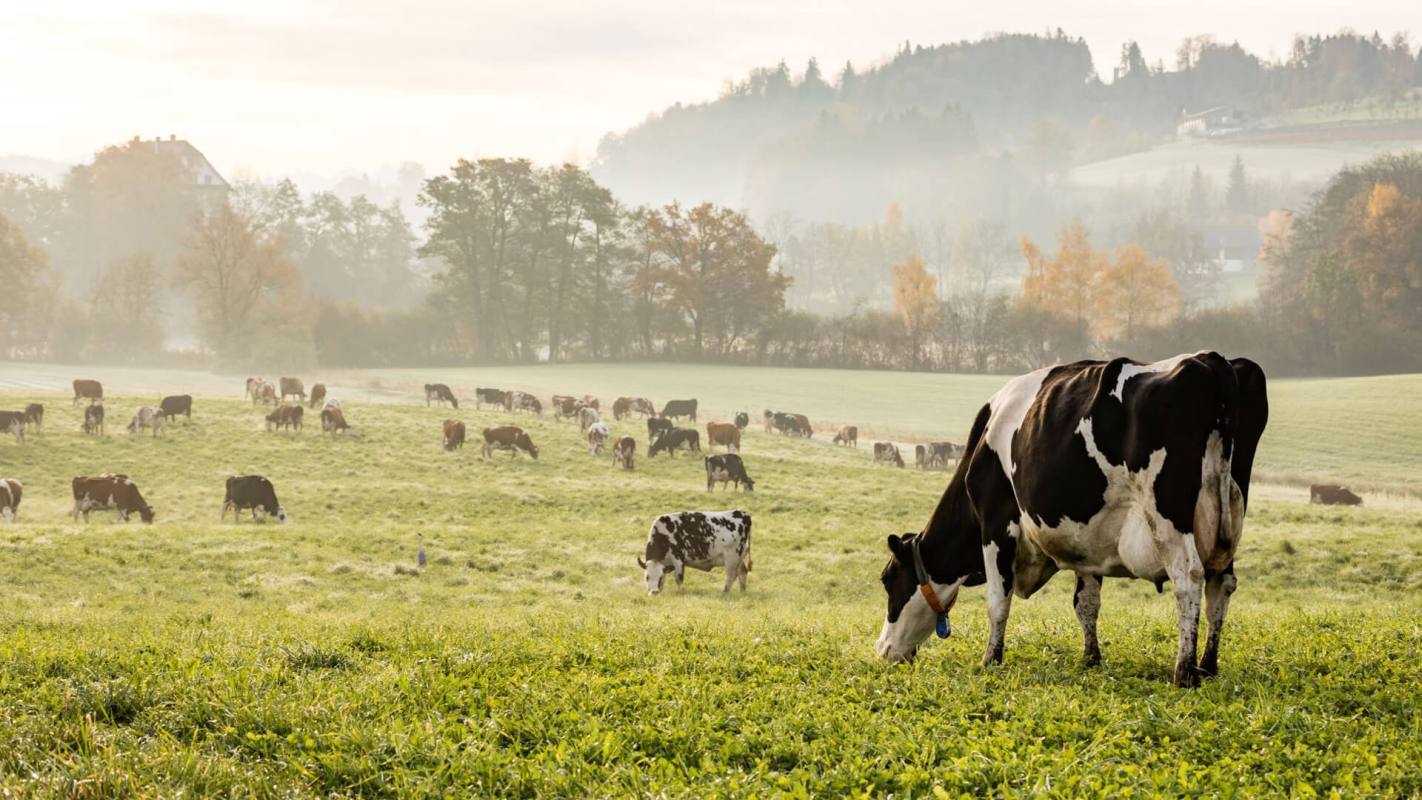Dickinson's College Farm, a USDA-certified farm and living laboratory in Pennsylvania, will soon be powered by cow pies and discarded leftovers as part of an exciting renewable energy experiment, all while reducing food waste and harmful pollution … just watch your step.
As it decomposes, cow manure releases methane gas — a powerful planet-overheating gas.
But as Yale Climate Connections explains, if the manure breaks down inside a system called an anaerobic digester, the gas can be captured and used to generate renewable energy.
What is an anaerobic digester?
Anaerobic literally means "life without air" and describes energy production that doesn't require oxygen. If the word sounds familiar, it's because you may have heard it used before when discussing exercise.
Anaerobic metabolism is carried out in humans by our muscles when we are doing strenuous exercises. As Very Well Fit explains, this occurs "when your lungs cannot put enough oxygen into the bloodstream to keep up with the demands of your muscles for energy."
Generally, this is only for short bursts of activity, like sprinting. The process leads to the accumulation of lactic acid in muscles, a byproduct of anaerobic metabolism.
Similarly, anaerobic digesters break down organic matter when there is no oxygen present.
Oxygenless conditions force microbes, the tiny organisms breaking down the waste for energy, to ferment matter like cow manure and food scraps, and produce methane gas along with a solid called "digestate" as byproducts.
Anaerobic digesters encourage responsible manure management, which can help combat harmful farm runoff into local water sources. The heat, electricity, or fuel produced can help lower fossil fuel reliance on farms as well.
How does an anaerobic digester work?
First, waste and water are mixed in a warm and airtight vessel, where the microbes in the waste break it all down into simpler components.
TCD Picks » Quince Spotlight

Then, since there's no oxygen available in the tank, tiny organisms use fermentation to break down those components.
During fermentation, these microbes convert complex organic molecules into simpler ones while producing methane gas, which can be burned as fuel or converted into electricity with a generator, and a solid called digestate, which makes a wonderful fertilizer.
Why are anaerobic digesters not more widespread?
The tech is pretty expensive and, in the U.S., only large farms can afford those big systems.
"[F]arms need to have about 500 cows or more to make a digester project cost-effective in the United States," Matt Steiman, the special projects manager of Dickinson's College Farm, told Yale Climate Connections. "The average dairy farm size in Pennsylvania is 85 cows."
Europe has smaller-scale digesters that are much more accessible for the average 85-cow Pennsylvanian dairy farm. Steiman wants to try out the digesters from across the pond to see if they'd make economic sense in the States.
With well over a million dollars in funding from the USDA, EPA, sustainable energy funds, environmental organizations, and the Pennsylvania Department of Agriculture, College Farm is well on its way to operating a midsize, automated commercial digester system full time.
Once up and running, the farm will investigate how to make anaerobic digesters affordable or profitable for farms in the U.S., like selling back extra energy to the grid or decomposing the waste from local businesses for a fee.
The anaerobic digester system experiment currently planned at Dickinson's will take the waste from 150 cows, mix it with two tons of daily food waste from the college's dining services and other businesses, and produce between 200,000 and 300,000 kilowatt hours of energy per year.
That's enough to power the farm and an upcoming Farm Lab education facility while selling surplus back to power companies.
The project is also projected to offset 150 to 300 tons of planet-overheating gas pollution per year. If it can be expanded to other small and midsize dairy farms around the country, that could really add up.
Dickinson's College Farm is working to begin operations by summer 2023. Steiman told The Sentinel, "The permitting and fundraising has taken longer than anticipated," but "The engineering is just about done."
Now the project awaits reviews from Cumberland County and the U.S. Department of Agriculture. Once up and running, Steiman sees College Farm's digester as a guide for other dairy farms in the region.
He thinks around 5,000 farms in Pennsylvania alone could benefit from commercial anaerobic digesters.
Follow The Cool Down on Instagram and subscribe to our newsletter.












